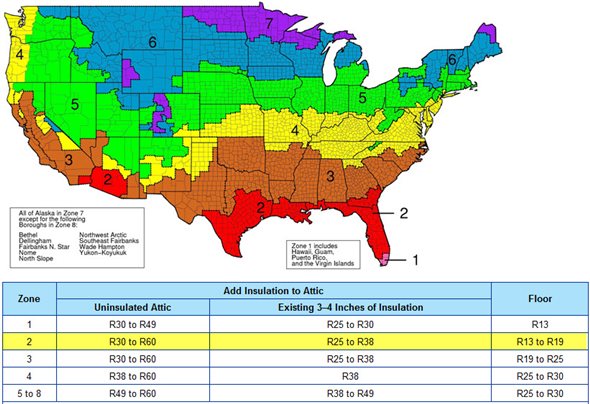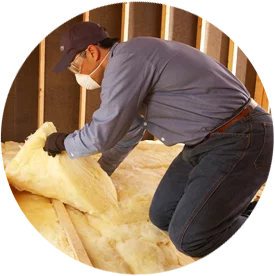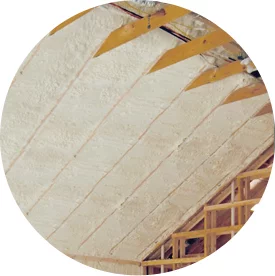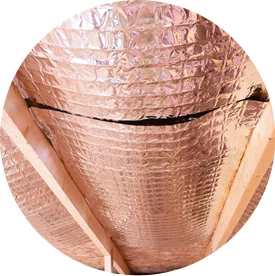If you’re installing insulation and doing some research, you’ve undoubtedly heard the term “R-value.” But what exactly is the R-value of insulation and is it important? Simply put, the R in R-value stands for resistance and is a basic measurement of an insulation material’s heat resistance.
A properly insulated home should reduce the flow of heat, keeping it in during the winter months and out during the hot months. Reducing the flow of heat in your home helps keep your energy costs low, so good insulation is important for every homeowner.
Contact us to install insulation and start living more energy efficiently, or keep reading to learn more about R-value!
How Is Insulation R-Value Calculated?
Let’s start at a base point: solid wood has an R-value of 1. An R-value is also calculated per inch of width. Therefore, a 3-inch-thick board has an R-value of 3. Blown fiberglass attic insulation has an R-value of 2.2 per inch, so 12 inches of it would give you an R-value of 26.4 in your attic installation project.
What R-Value Is Best for My Home?
Yes, generally a higher R-value means a more effective insulator, but the highest R-value possible may not be necessarily right for your project. Homes in certain climates don’t need as much insulation as others.
For example, homeowners in Alaska need insulation that will stand against extremely cold temperatures for many months—not so much a concern here in Texas.
That’s why different regions of the United States have different recommended insulation levels recommendations. Here in San Antonio, we are in zone 2, where R-value recommendations can range from R13 to R60 depending on the area of your home or building you are insulating.
Need help determining the correct R-value for your home or building? Contact our insulation contractors today!
Source: energystar.gov
Where Should I Install Insulation?
Where to install insulation is the second thing you’ll need to know because different areas of your home require different R-values. The attic needs higher R-value than wall insulation because heat naturally rises and commonly escapes through your attic.
Different materials also differ in R-values. For example, spray foam insulation has a different R-value than fiberglass insulation.
After you’ve figured out your zone and where your insulation is going to go, then you look at your different options and types of insulation.
This is a lot of information, but don’t worry—you won’t be doing this on your own. An insulation company will be able to help you with all your needs and explain R-value, the right amount of insulation for your home and more!
Choosing the Right Insulation for Your Project
The R-Value shouldn’t be the only determining factor when you choose insulation. How old your home is, its location and building materials can all play a part in choosing the right insulation. Cost and the inhabitants of the home may be another factor in your decision-making. No matter what type of installation you choose for your project, IBP San Antonio can help.
Insulation Installation in San Antonio
If you’re looking for an insulation company in San Antonio, look no further than IBP San Antonio. We provide quality insulation installation and removal services to homes and commercial properties.
Contact our insulation contractors to learn more about our services or if you’re ready to install insulation in your San Antonio, Texas area home!













